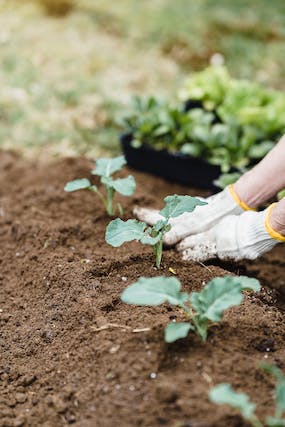
Protecting the Foundation: A Look at Soil Conservation in Sustainable Agriculture
Imagine a world where the earth beneath our feet isn’t just dirt, but a living tapestry woven from minerals, microbes, and organic matter. This is the essence of soil, the very foundation of life, and its conservation is the cornerstone of sustainable agriculture, ensuring bountiful harvests for generations to come.
No longer a forgotten resource, soil conservation has taken center stage in modern agriculture, driven by a growing understanding of its vital role. Soil degradation, fueled by erosion, compaction, and loss of organic matter, threatens food security and ecosystem health. But the tide is turning, thanks to a diverse array of practices:
Cover cropping: Planting crops that cover the soil between cash crops protects it from erosion, builds organic matter, and suppresses weeds.
Crop rotation: Diversifying crops fosters a healthy balance of nutrients and microorganisms in the soil, reducing dependence on chemical inputs and promoting pest and disease resistance.
No-till farming: Minimizing soil disturbance through reduced tillage protects soil structure, increases organic matter content, and improves water retention.
Terracing and contour farming: These practices create physical barriers and manage water flow on sloping land, preventing erosion and optimizing water use.
Agroforestry: Integrating trees into farming systems provides windbreaks, reduces erosion, adds organic matter through leaf litter, and attracts beneficial insects.
Precision agriculture: Utilizing GPS, sensors, and data analysis helps target fertilizer and water application, minimizing waste and preventing soil pollution.
Embracing soil conservation requires commitment and adaptation:
- Choosing the right practices for your land and climate: Different soil types, slopes, and climates require tailored conservation approaches.
- Investing in long-term benefits: Soil conservation often requires initial investments in cover crops, equipment, or changes to farming practices, but the long-term benefits outweigh the costs.
- Building partnerships and knowledge: Collaborating with other farmers, extension services, and conservation organizations can provide valuable support and resources.
Despite these challenges, the rewards of soil conservation are undeniable. It leads to:
- Increased yields and resilience: Healthy soil supports higher yields, better water retention, and increased resistance to extreme weather events.
- Improved food quality: Nutrient-rich soil produces nutritious food, contributing to human health and well-being.
- Enhanced environmental sustainability: Soil conservation reduces pollution, protects water quality, and promotes biodiversity.
- Improved economic viability: Sustainable practices can lead to cost savings, reduced reliance on external inputs, and enhanced market access for farmers.
Technology plays a crucial role in supporting soil conservation efforts:
- Remote sensing: Drones and satellites provide aerial views of fields, helping farmers monitor soil erosion, track cover crop growth, and identify areas needing attention.
- Soil health monitoring tools: Sensors and soil testing kits measure key soil parameters like organic matter content, nutrient levels, and moisture, guiding informed management decisions.
- Modeling software: Tools like erosion prediction models help farmers predict the potential impact of different practices on soil health and erosion risk.
Embracing soil conservation is not just a technical endeavor, but a philosophical shift. It’s a commitment to caring for the land, nurturing its life force, and ensuring its bounty for future generations.